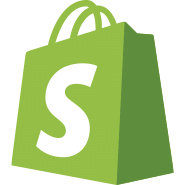How These Two Founders Built A $1M/Year Email Marketing Platform From Melbourne
Hello! Who are you and what business did you start?
Hey I’m George, co-founder and CEO of SmartrMail. We’re an app that makes email easier for ecommerce merchants through seamless platform integrations and automated personalization.
Last year the ecommerce stores who use us sent over a billion emails, and generated more than $50m in sales. SmartrMail is made up of a distributed team of 14, and we currently make over $100K in monthly recurring revenue, growing 10% a month.
We raised $400K angel funding in 2017, and have been (just) profitable since the start of this year. At the moment we’re focussed on product and growth, so any top line increases we spend on development, and getting more customers.

What's your backstory and how did you come up with the idea?
Phil and I started SmartrMail out of an online art gallery actually! Funny to go from Art to Email SaaS, but the jump makes sense in context.
In 2012, my co-founder Phil, my brother Edward and I wanted to set up an online business. I was working in app development (and was a failed musician), Phil was a CFO and Edward was in finance. So, we set up an art marketplace...of course (🤪)..
Laser focus on the small improvements. Sweat each incremental 1%. Big jumps are extremely rare, but if you constantly optimise for small improvements every week, you can get 2-3x annual growth.
I’d wanted to do something in music, Ed and Phil in wine. But music seemed solved with SoundCloud, which I loved. A couple of good friends were artists, and had nowhere to exhibit and sell their art online. So we decided on an online art marketplace, Bluethumb https://bluethumb.com.au. My idea was ‘SoundCloud for Art’. We grew Bluethumb into Australia’s largest online art marketplace, quitting our jobs along the way, and learning tonnes about how to build an ecommerce marketplace.
Edward runs Bluethumb today, and it’s topline is a fair bit larger than SmartrMail. As we grew, Email was our 2nd most important revenue channel, and no tool we tried did what we needed: take individual user data, and send them the products they were likely to buy, based on their clicks and other data. Tools like Mailchimp at the time were too basic when it came to e-commerce, so the only options were to fork out thousands for enterprise software or hack together something ourselves. We decided to hack it, and it was immediately very effective.
So in 2016, Phil and I decided to turn this into its own product for any ecommerce stores. We wanted to give any store the power of automatic personalised content in their emails, easily. Like Amazon’s emailing, for any small ecommerce store. We thought it would take us 4 months to turn our MVP into a Shopify app. I mean, hell, we’d built the hard part, the Machine Learning engine and email system, how hard could the rest be?
12 months later...we launched on Shopify lol.
Take us through the process of designing, prototyping, and manufacturing your first product.



With designing SmartrMail, we were eating our own dog food as we’d built an email system for Bluethumb, and had tuned it for better engagement (and sales), so initial product decisions were just gut decisions.
But we quickly realised building a B2B SaaS has tonnes more complexity than building a first to market consumer marketplace. When people hear you’re building an email tool, their first reaction is mostly “huh, isn’t email already solved?”. And they have a point, email was invented in the late 60s, and there are established email companies that are 20 years old and still market leaders.
So the key for us has been to build less for most people, and focus on solving for small to medium ecommerce stores only. And we knew from experience, we weren’t going to be competing against other email apps, we’re actually competing against the founder/marketing person’s time.
Ecommerce business owners and marketers don't have enough time for executing properly across the key marketing channels. That's where other email apps fall down. A long set up time, all the time to optimize flows, and worst of all, a bloated composing flow which takes ages.
So we optimised for speed. Our features are (now) as powerful as you get for ecommerce, but so much faster to get to an excellent result. A "holy shit my brand looks amazing on email" result. Or "my revenue from email has doubled, and I spent less time per week on email" type result.
Optimising for speed has meant most of our new revenue does come from stores switching from other email apps, but we still view our main competitor as an entrepreneur's time.
When we launched though, a problem we immediately hit was an MVP just doesn’t cut it for a serious ecommerce store. We had a sophisticated recommendation engine, serving up custom content for every subscriber in a store’s list. BUT, if it didn’t look beautiful, and perfectly match their brand pixel for pixel, then it wasn’t good enough. Cue another year (for ten product peeps) building out all the other design tools a sophisticated brand needs to customize their emails to look amazing.
Describe the process of launching the business.
We launched on Shopify and BigCommerce app stores years ago, back then there was a lot less competition against other apps, so were just lucky to be able to acquire customers on the app stores immediately.
We initially launched the app with a flat $20 fee, which was a fraction of the cost of Mailchimp and other email apps at the time. While it was never feasible to keep that price, it did allow us to get early insights on how we could improve the app and what was missing.
With zero traffic other than the app stores, we threw out whatever content we could that would drive traffic from e-commerce owners and hopefully lead to an install. It’s embarrassing to look at how bad that content was 3 years later, but some posts like “Shopify’s 5 Trendiest T-Shirt Stores” still ranks in our top 5 posts in terms of traffic.
I think we also did a product hunt launch, and have done subsequent updates on there, but our SaaS never seemed to light up the PH community. In hindsight it would have been better to build up an email list, some buzz and community before we launched. We did a better job recently for our other project, Sendy. It turns out that putting in the extra work resulted in us coming #6 on the day with 8x the upvotes than we had with SmartrMail.
Since launch, what has worked to attract and retain customers?
Hiring the right people has helped a lot with our growth. Good staff with an ownership mindset grow your business on their own steam.
We have tended to hire less experienced people, with a good “I’ll just work it out” attitude, and they’ve grown with us. We’re now at 14 people, and a lot of those staff started as interns or entry level. They can ‘create their own job’ by taking ownership of, say, a particular growth channel or key responsibility and just figuring it out. If they can get us more revenue then they’re building their own role, and their value.
It’s dumb to act like we know the answers, because as an entrepreneur you’re figuring it out as you go along. Finding junior people who can think outside the box, learn quickly, and actually execute quickly has been key for us. It also sets a good culture: informal, collaborative, and results focussed.
When we first started out we relied on a lot of paid channels to drive traffic and installs. Facebook ads to drive targeted traffic to our content and then retargeting on Adroll. It wasn’t entirely cost-effective but it gave us good insights on the type of content that would resonate with our audience. Content is a slow burn, but once you eventually build it up you’ll start seeing the dividends. In 2017, organic traffic drove 5% of installs and today it drives over 15%. Our top 3 channels are now app stores, organic, and paid search.
We try to experiment with 1 new channel per quarter, this quarter we’ve been tackling linkedin advertising with short videos that funnel into longer form content like webinars and marketing guides.
If we can get a good ROI bringing in new stores, we keep that channel running and optimize, otherwise we kill it at the end of the quarter. That’s the max I think you can focus on at a time with a small growth team that's running multiple acquisition channels.
How are you doing today and what does the future look like?
Right now we’re focused on sustainable growth and key product improvements for our niche of stores.
The email space within Shopify has always been competitive, but Mailchimp breaking off their integration this year has really ramped things up. We took a page from their playbook late this year and launched a freemium tier. It seemed like a weird move to some. More SaaS companies launch with a free tier then eventually kill it. At first we were hesitant that we would be able to provide the same level of support for free users but so far the results have been good. We’ve 5X’d our daily installs and generated more reviews, which has given us more visibility to larger merchants. Along with app store exposure, we consistently optimize our SEO efforts and paid channels including adwords, display and social.
As we’ve grown our team we’ve also had more bandwidth to take on bi-weekly user testing and customer interviews. It’s helped us move on from just gut decisions when it comes to product development. As we’ve grown so has our exposure to a diverse base of merchants with different challenges, so jumping on a video call lets us get valuable insights, quickly validate our product ideas and find holes in our designs.
Next year with Shopify expanding into other markets, we’re also pursuing localizing in countries where we have remote team members. Being in 5 countries and speaking 7 languages across the team we’re uniquely positioned to grow with Shopify internationally. It’s been an interesting challenge for our product team, and undoubtedly will challenge our support staff but we’re looking forward to growth in this area. I’m just hoping it doesn’t slow down our product development too much (we’ll find out soon!).
This July we also launched an email newsletter marketplace called Sendy https://sendy.network. Email is vital for marketers as an ‘owned channel’ (as opposed to ‘rented channels’ like Facebook ads). However there are bad actors out there who abuse subscribers trust by over emailing, or worse spamming, which leads to subscribers questioning why they hand over their email. Sendy solves that by paying subscribers for their attention and keeping their email protected from emails they never subscribed to. For marketers, it’s a new channel to grow their lists of interested subscribers, and so far the results have been excellent (it’s been roughly doubling users every month, with click rates at 6x the industry average).
Through starting the business, have you learned anything particularly helpful or advantageous?
The best lessons we’ve learned have been through doing. For every amazing idea, growth hack, feature you think of, ¾ don’t work. At the time it seems like a sure thing, a definite winner. And then it doesn’t work. But that’s the nature of growing a business, there’s no paved road forward. It’s more like cutting a path through the jungle.
So the most important thing for our growth over the last few years has been just trying stuff, moving forward, being fast with testing ideas.
If you’re thinking of doing something, then start doing something. You learn by doing.
I get most of my good ideas for growth from talking directly to founders and folks in start-ups. You can read someone’s YC essay or tweet storm, but it’s often sanitised, generalised bullshit. Actually talk to a founder, make friends, and you’ll hear the real insights. The one in four growth hacks that actually work. These are insights they have, things they’ve learned through doing, but are probably too busy to blog about.
One piece of advice we got back in 2014 from Adam Schwab, our first investor in Bluethumb, was to laser focus on the small improvements. Sweat each incremental 1%. Big jumps are extremely rare, but if you constantly optimise for small improvements every week, you can get 2-3x annual growth.
What platform/tools do you use for your business?
- Slack. We’re remote, and slack is the glue that holds together our whole company.
- ChartMogul. Tracking SaaS metrics.
- Intercom. Customer service and onboard. Wow it’s expensive, but too useful to leave (though we’re actively looking for a cheaper alternative...request for start up?).
- Shopify App Store. A lot of our growth has been tied directly to the growth of Shopify. They just keep improving at a relentless pace, they’re an incredible company.
- SmartrMail. For our email marketing of course ;)
- FirstPromoter. To run our partner tracking for the agencies who refer us new stores.
- Perfect Audience. For retargeting ads.
- Wootric. NPS tracking (their free tier is awesome, highly recommended).
- OfficeVibe. Staff feedback (again, good free tier).
- WeWorkRemotely + Workable. Best place we’ve found for hiring remote Rails developers.
- Calendly + Zapier + Zoom. Run our onboarding sales flows seamlessly with these 3.
What have been the most influential books, podcasts, or other resources?
Here are a few books I love, and found inspiring enough to reread:
Founders at Work by Jessica Livingston
A fascinating, varied collection of interviews with tech founders who’ve exited their start ups. Of note in a great interview with Ev Williams post Blogger, talking up his new podcast start up Odeo (which he pivoted into Twitter). Also Stewart Butterworth is in there, having exited Flickr, but pre-starting Slack.
Getting an iPhone changed my life. I loved it so much it was the push I needed to go back and study computer science, which then lead to my favourite job ever, making apps at Outware, which led us to starting our first online business. Thanks Jobs!
The Snowball: Warren Buffett and the Business of Life by Alice Schroeder
Buffett’s an incredible investor, and this is the best deep dive I’ve read on him. What struck me is how many of the best investing opportunities he’s passed on over the last 70 year. He said no to being the first in at Intel, early Google and dozens of others. He only makes investments where he truly understands things, and then only when they’re cheap. He’s sat on the sidelines for years at a time without investing a dollar. Imagine being a professional investor, going to work every day, and buying nothing for 3 years while a bull run rages. I wish I had the self control to operate like this, but I guess that’s what makes him special.
Slaughterhouse-Five by Kurt Vonnegut
Time is weird, war is bad. I love Vonnegut.
The 4 Hour Work Week by Tim Ferriss
It’s dated, cheesy, a lot of the advice I don’t agree with, and the reality of building a long term brand is the opposite of working 4 hours a week. But the crux of the book is Ferriss gives you permission to blaze your own trail. Plenty of founders I know have said it was the catalyst for them trying their first venture.
Advice for other entrepreneurs who want to get started or are just starting out?
In general, if you’re thinking of doing something, then start doing something. You learn by doing. I’m a fan of side hustles, I guess because it worked for us. We grew our first company slower at the start as a side hustle whilst we had jobs, but there wasn’t the pressure of “this brand new business must make enough cash for me to survive on within 3 months or I starve.” So if you’re thinking of a business but the fact you have a job slowing you down, don’t let it. Just try it.
Um, don’t dropship? My limited understanding of drop-shipping is it’s a race to the bottom. Talk to a supplier and see if you can tweak a product enough so that it’s unique. People pay for brands, and you need something real and different to build a brand. Even slightly different.
Lastly, don’t be afraid of buying an existing, old, ugly, unloved business and putting some energy behind it. We’ve done that a few times, it’s an amazing learning experience, and if you know what you’re looking for, you can make a good return. I wrote a little guide on how we’ve done that in the past here.
On this, one growth hack we’ve employed in the past is buying an established adjacent business to your current one, to boost sales on the current. If a content business is monetised on eyeballs/ads, each visitor might be worth 2c. On flippa you can buy it for 2-3x annual profit. If you have an ecommerce business in the same niche where each visitor is worth $5, buy the content business and funnel the visitors across through links, content, email and retargeting. Instead of getting 2c per visitor you’re now getting $5. We’ve done this in the past and it’s one of the rare ‘silver bullets’ that have given us big boosts.
Are you looking to hire for certain positions right now?
Yes, we’re looking for remote full stack Ruby on Rails developers, bonus points for front-end UI/JavaScript experience. Please email us directly hello@smartrmail.com.
Where can we go to learn more?
- Website https://www.smartrmail.com
- SmartrMail on Shopify https://apps.shopify.com/smartrmail/
- George’s Twitter https://twitter.com/gthartley
If you have any questions or comments, drop a comment below!

Download the report and join our email newsletter packed with business ideas and money-making opportunities, backed by real-life case studies.

Download the report and join our email newsletter packed with business ideas and money-making opportunities, backed by real-life case studies.

Download the report and join our email newsletter packed with business ideas and money-making opportunities, backed by real-life case studies.

Download the report and join our email newsletter packed with business ideas and money-making opportunities, backed by real-life case studies.

Download the report and join our email newsletter packed with business ideas and money-making opportunities, backed by real-life case studies.

Download the report and join our email newsletter packed with business ideas and money-making opportunities, backed by real-life case studies.

Download the report and join our email newsletter packed with business ideas and money-making opportunities, backed by real-life case studies.

Download the report and join our email newsletter packed with business ideas and money-making opportunities, backed by real-life case studies.






































